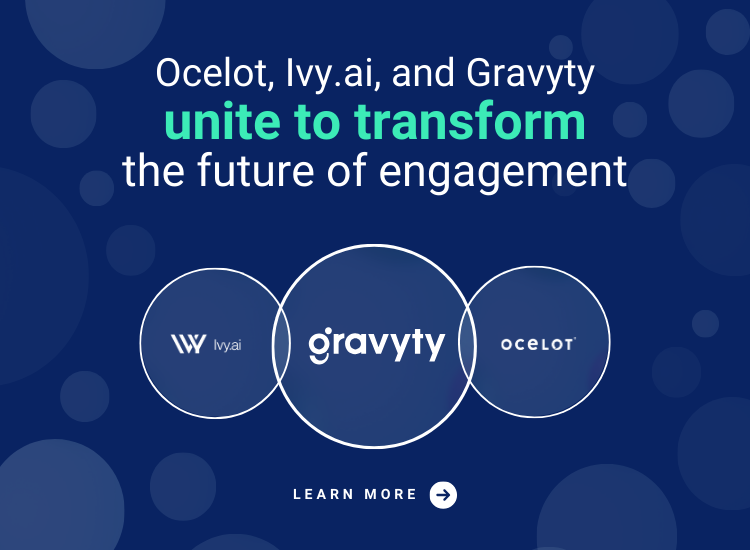For student service professionals new to artificial intelligence, AI can be both a very interesting and very intimidating concept.
In reality, many of the institutions that are using AI chatbots in admissions and student support are finding that AI can help lead to greater student engagement, enrollment, efficiency, and opportunity.
At the same time, there is natural concern about AI falling short of the standard we want to meet when engaging with students. There is concern about AI learning the wrong things. And there is concern about the amount of work, study, and focus that is needed to both deploy and improve the AI over time.
Fortunately, the combination of software as a service, and AI as a service, is making AI more accessible and easier to implement than ever before. A good SaaS/AIaaS partner can help institutions deploy a sophisticated chatbot without taking resources away or distracting institutions from their core purpose.
A good partner can help ensure that the AI is working at a high level from the start by using a number of different methodologies. Some of the most notable approaches, include:
A Focus on the Content
AI technology at this stage of its evolution is largely learning through human-supervised, guided machine learning. Science fiction movies that conjure up images of machines that learn with human-level consciousness is still quite a ways off. Current AI requires keeping a knowledge base of content current and up-to-date. The AI will only be as effective as the content that powers it. Thus, the most effective AI for student engagement has a broad and robust knowledge base of content supporting it.
Trends and Pattern Spotting
There is considerable data that comes from the use of AI that can be observed and put to good use. Reviewing student interactions across the AI platform creates opportunities to develop new topics for future interactions and education. The data reveals the topics and questions that are top of students’ minds. This is perhaps most urgent when an emergency hits. In recent years, even prior to the pandemic, intense events such as wildfires and threats of violence have disrupted school operations. By observing student interactions, administrators can quickly identify gaps in the institution’s response and communications.
Using Multiple Analytical Models
AI technology can benefit from utilizing multiple analytical models to ensure schools can capture different ways a student can ask about particular topics and properly classify each intent. A partner can help measure and refine each of these analytical models, and retrain them over time to create more impactful AI for institutions. These models lead to better conversations with students.
Transfer Learnings
With a partner, institutions can take a big data approach to supervised machine learning. Data scientists can transfer learnings across all students to help train an institution’s AI platform. With a larger training dataset that goes beyond the volume of a single institution, AI can learn to better understand a student’s question, classify the student’s goal, and identify potential answers that use natural human language.
Taking Advantage of Data Science, AI Conversational Design
There is tremendous opportunity to map student journeys through an AI dialog flow to ensure it is helping students complete their desired tasks. Human-supervised, guided machine learning can work hand in glove with AI technology to regularly expand the topics that machine learning can cover. And, over time, more automation can be built around the AI to support continuous improvement processes.
All of these approaches complement each other. They create an ever-learning environment that builds on each experience to get better and stronger over time.
Ultimately, AI innovations draw from many fields of study we are all familiar with: computer science, linguistics, electrical engineering, mathematics, statistics, philosophy, and psychology. They collectively provide a foundation for machine learning and natural language processing.
The Wrap: Stay Manageable and Scalable
Higher education faces considerable uncertainty, especially around enrollment and funding. AI technology is an affordable way to invest in student engagement to drive enrollment. The key is approaching this technology with a mindset that prioritizes ease of management and scalability. The approaches listed above are a good start.
Student support in higher education has a defined scope of terminology and processes. This does not mean that it’s static knowledge. It is growing more and more over time. But since the scope of information is highly domain specific, this creates a near-perfect environment for AI machine learning. We know that the information, because of its specificity, has historically been complicated to understand, especially for first-generation college students. By simplifying concepts and being accessible 24/7/365, AI technology can reduce the roadblocks in higher education and improve processes for all.
For colleges that want to deepen engagement with students and drive enrollment, AI technology can provide a new approach, with many superior qualities to traditional processes. By following the basic approaches noted above, institutions will give themselves the best chance to use AI in a way that is both manageable and scalable.








